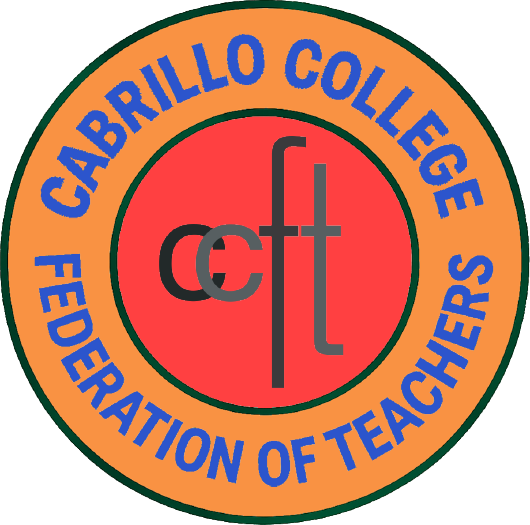To help me gain more understanding of the different terms that are associated with the BSSOT Project, I asked Ann to define and clarify the following:
BSSOT is the Basic Skills Student Outcomes Transformation Grant, which Cabrillo received in 2017.
AB705 California legislation restricts colleges from requiring students to enroll in non-transferable English and math courses that lengthen their time to degree, and it guides colleges toward co-requisite models in which students receive “additional concurrent support…during the same semester that they take a transfer-level English or mathematics course.”
Multiple measures: is a term used in assessment and placement that means community colleges need to use more than one measure to assess student abilities for placement. In the past, California Community Colleges have used weak forms of multiple measures.
MMAP: is the abbreviation used for the Multiple Measures Assessment Project, which is a state-wide project spearheaded by the RP Group (Research, Planning, Professional Development for California’s Community Colleges). MMAP researchers compiled data sets of .over one million students and analyzed different variables to see what the best predictors of success were. This research revealed that standardized assessment tests had very little predictive validity, which was unfortunate given that assessment tests were the most common placement tool. The good news is that the research showed cumulative high school GPA to be a great tool for predicting student success.
MMAP at Cabrillo has been our efforts to implement the use of high school data in the assessment and placement process.
CAP (California Acceleration Project/ Co-requisite Model) is a faculty led professional development network that supports the state’s 114 community colleges to transform remediation for to increase student completion and equity. CAP is focused on one primary outcome: increasing the number of students who go on to complete transferable gateway courses in English and Math, a critical early momentum point toward longer term degree and transfer outcomes.
Co-requisite models are the most powerful strategy for increasing completion of transfer-level math and English for students designated “not college ready.” In co-requisite models, students deemed “underprepared” are not excluded from transfer-level courses. Instead, they receive additional support to be successful there.
Gail: Please describe your role in the MMAP Work at Cabrillo?
Ann: I am the BSSOT Grant Manager, and lead two of the main BSSOT projects: MMAP implementation and English Acceleration.
Gail: What do you think is most important about your work with MMAP?
Ann: These two projects create radical change to student placement and access to transfer level courses in math and English. The work is complex, urgent, and dismantles a powerful system of institutionalized racism that disproportionately blocked students of color, low income students and women from transfer level courses. I am inspired to be working on this important project.
Gail: How is the BSSOT Project changing student assessment and student placement into courses?
Ann: Cabrillo launched full MMAP implementation this semester. Now when students come to the assessment center, placement is based on their assessment test results and high school performance data. Students receive the highest placement possible, and the new system greatly broadens access to transfer level courses.
Gail: How does AB705 legislation change student assessment and placement?
Ann: While the changes we have already implemented feel pretty radical, the truth is that since the passage of AB705, all these radical changes are actually not enough to be compliant with the new legislation. While MMAP was a voluntary project for Cabrillo, AB705 mandates the use of high school performance data for placement, requires that colleges optimize the probability of students’ completion of transfer level math and English in one year, and that students cannot be placed below transfer level unless they are “highly unlikely to succeed.” Since the passage of AB705 there has been great debate and curiosity surrounding the “highly unlikely to succeed” standard. The Chancellor’s Office recently released AB705 guidelines that state “when compared to the attrition of traditional sequences, students are more likely to succeed in transfer level English and mathematics if they begin there.” For example, students in the lowest high school GPA bracket (1.9 or lower) have a 43% chance of passing English 1A if they are placed directly into the course. When the same students are placed into English 100, they only have a 12% chance of completing English 1A within one year. What this legislation means in practice is that virtually all students will have access to transfer level courses. While Cabrillo must become AB705 compliant by Fall 2019, changes are already underway. Recently the math department voted to allow all new and existing students’ access to Math 12 (Statistics), regardless of assessment results or previously attempted math courses. These are big changes for Cabrillo, and there will be more to come.
Gail: What excites you about implementing Multiple Measures at Cabrillo?
Ann: It has been a great experience working with staff, faculty and administrators across the campus to collaborate on such a complex project. It has not been easy! While there is much more work to be done, I’m excited about the changes that are underway and the process we engage in together to tackle these issues. Cabrillo has incredible talent, and it has been pretty awesome to draw from so many levels of expertise across campus to accomplish the goals of the grant.
Gail: What is (or will be) the impact of Multiple Measures on Cabrillo students and how do you see it as a force to increase student equity at Cabrillo?
Ann: Placement is Destiny” – the more remedial courses students are required to take, the more likely they are to drop out before they ever reach credit-bearing courses.
Though often invisible, under-placement is a core obstacle for completion. Students who are under-placed face lower course completion and persistence. Under placement also creates greater time, tuition, and opportunity costs for the student. Our historical placement practices not only have poor predictive validity, but they disproportionately impact students of color. Using high school performance data for placement will reduce disproportionate impact, and combining MMAP with co-requisite designs in English and math will further increase gains in student equity.
Gail: What might be some of the impacts of Multiple Measures on faculty?
Ann: MMAP broadens access to transfer level courses, so faculty will have a different classroom makeup. There will be more students of color, low income students and women placing directly into transfer level courses. In the past, many of these students never made it to the transfer level due to the attrition of traditional sequences. BSSOT funds have focused on providing professional development opportunities for faculty, especially to engage in California Acceleration Project (CAP) workshops and institutes.
Gail: How will MMAP will be integrated with Guided Pathways?
Ann: MMAP is a foundational aspect of Guided Pathways. Some of the first steps recommended by the Chancellor’s Office are: placing students accurately via multiple measures; engaging students with curricular enhancements such as acceleration and co-requisites; and allowing students in enroll in college level curricula with supports as an alternative to placement in developmental English and math. We are making solid progress on all of these recommendations.
Gail: How could faculty learn more about the Multiple Measures Project?
Ann: Staff and faculty are welcome to join our bi-monthly MMAP Implementation Committee meetings (Fridays, 1:30-3:00 in SAC West 214) or contact me: anendris@cabrillo.edu










